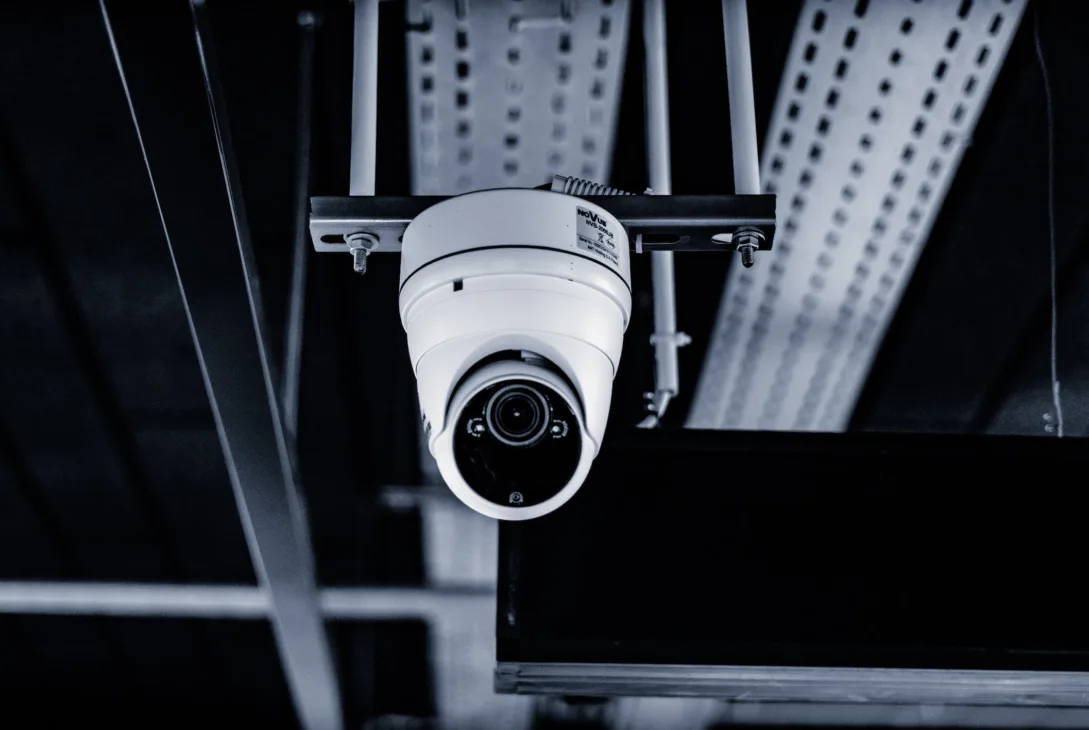CCTV surveillance solutions have transcended grainy black and white images to becoming sophisticated tools shaping security landscapes. Cameras now feature high-definition visuals, remote access capabilities, and intelligent systems, a complete shift from their humble beginnings of simple home security systems. Other qualities to highlight are object detection, facial recognition, and thermal imaging, identifying potential threats before tragedies occur. Integration with other security systems creates a unified security ecosystem, while cloud storage ensures footage accessibility even during physical breaches. Whether you’re looking to deter crime, enhance public safety, or to monitor operations, CCTV solutions offer an adaptable and customizable approach to security, evolving alongside the needs of individuals, businesses, and communities.
How Does a wireless CCTV Work?
Closed-Circuit Television in short stands for the CCTV that we are all familiar with. The meaning behind this means its footage stays within a private network. For the purpose of viewing or recording, it undergoes a process of capturing visual information and delivering it. Generally, a camera captures a series of images, converting light into electrical signals via a sensor. These signals are then processed and formatted into a video stream, where they are transmitted wirelessly through cables to a monitor or recording device. In the 21st century, the systems often utilize digital video recorders (DVRs) for storage, allowing for playback and analysis. More advanced setups may include features like AI-powered analytics and proactive alerts.
Where Does Stored Footage Go?
Stored CCTV footage may end up in different places depending on how the system is set up. Traditionally, one would be able to find them on local hard drives within the Network Video Recorder (NVR) or directly on the camera itself via an SD card. Both options offer limited storage, prompting older footage to be overwritten after weeks or months. For remote excess or extended retention, the footage may be found on the cloud. They usually reside on servers managed by service providers, offering redundancy and accessibility. Some systems even employ a hybrid approach, combining local storage for immediate needs with cloud backup for long-term archiving.
Importance of Wireless CCTV camera
Easy Installation
The installation of wireless CCTV cameras is surprisingly simple, eliminating the need for complicated tasks like drilling, navigating through cramped attics, or untangling wires. With wireless cameras, all you need is a power source and connection to your Wi-Fi network. This streamlines the setup process even for those with a penchant for do-it-yourself projects. For renters, individuals looking for temporary setups, or locations with complex layouts, the ease of installation is particularly convenient. At times, traditional wired systems may pose logistical challenges and hinder flexibility. Thus, wireless cameras offer a hassle-free solution, enabling quick deployment and efficient monitoring without the constraints imposed by physical infrastructure.
Flexible and Adaptable
Wireless cameras are more flexible and adaptable as compared to traditional wired systems. They are free from cable constraints, offering unparalleled placement freedom. Whether you’re looking for surveillance indoors, outdoors, perched on high shelves, or nestled in remote spots with accessible power outlets, wireless cameras can seamlessly integrate to accommodate diverse settings and configurations. Their versatility allows customizable security systems according to their unique requirements. With wireless cameras, you have the freedom to position them exactly where they’re needed most, ensuring comprehensive coverage and optimal monitoring capabilities. The absence of cables also eliminates the hassle of routing wires through halls or dealing with tangled cords, simplifying the whole setup process and reducing potential maintenance issues.
Cost-Effective
When you think about the surveillance choices to opt for, wireless systems have clearer benefits compared to wired ones. They’re simpler because they don’t need lots of parts like connectors and cables. This makes setting them up and keeping them working easier, eliminating the need to deal with many complicated pieces. One of the benefits that make wireless systems standout is their user-friendly installation, translating to potential savings in installation costs and offering users the convenience of setting up their security systems according to their own schedules and preferences. With wireless cameras, the process becomes more accessible even tho those with limited technical expertise.
Scalable and Expandable
The key advantages of wireless technology when it comes to surveillance systems are their scalability and expandability. With wireless setups, it is easier to integrate more cameras into your system by purchasing additional cameras and connecting them into your existing network. The simplicity and flexibility in expanding your surveillance network makes wireless systems highly advantageous when it comes to growing businesses or homeowners seeking to enhance their security coverage.
Remote Monitoring and Management
The ability to monitor and manage remotely offers an advantage in surveillance systems, revolutionizing the way we oversee security measures. By leveraging this feature, we can access live feeds and recorded footage from your smartphone, tablet, or computer, irrespective of your location, as long as you’re connected to the internet. This allows for real-time visibility, serving as a form of reassurance with knowing that you can monitor your property at any time, from anywhere.
Wireless CCTV Installation Process
Setting up a wireless CCTV system is pretty straightforward, providing a convenient option.
First Step: Prepare and Plan
Preparing and planning for the installation of your CCTV system involves certain steps to ensure a smooth and effective setup process. It is important to choose your cameras, taking into consideration the resolution, night vision capabilities, weatherproofing for outdoor use, and features like motion detection to meet your specific surveillance needs. You will also need to select suitable locations in areas you want to monitor and ensure there is a strong Wi-Fi signal along with easy access to power sources. It is also crucial to check local regulations regarding camera placement to avoid any legal issues or conflicts. You might also need a few tools for installation such as mounting screws, screwdrivers, and a drill for certain models.
Second Step: Install the Hardware
Mount the cameras securely following their manufacturer’s instructions, making sure they are aligned correctly and positioned to capture the desired field of view. You are encouraged to utilize a level during installation to maintain accuracy and ensure proper alignment. After this, connect them to power sources by plugging them into nearby outlets, ensuring a reliable power supply for continuous operation. Ensure that you have downloaded the manufacturer’s app onto your smartphone or tablet to facilitate remote access and management of your CCTV system. This app allows you to access recorded footage, view live feeds, and adjust camera settings conveniently from your mobile device, enhancing monitoring capabilities and a peace of mind.
Third Step: Connect to Wi-Fi and Configure
Subsequently, switch on the cameras as per the instructions provided in the manual, ensuring that each device can be activated properly. You’ll be able to find intuitive in-app prompts to guide you through the configuration process by opening the app on your smartphone or tablet and navigating to the device setup section. Connect to your Wi-Fi network by entering your network credentials and allowing the cameras to establish a secure connection. Once connected, customize your settings to tailor the system according to your specific needs. You can also adjust recording options, fine-tune motion detection sensitivity, configure notifications, and explore other features offered by the app to fully optimize functionality.
Fourth Step: Test and Verify
Begin by accessing the live feed through the manufacturer’s app and verify that you can clearly see a live view from each camera. This allows you to confirm that the cameras are properly connected to the app and transmitting video footage effectively. You should also test the recording functionality by manually triggering recording or waiting for motion detection to activate it. Playback the recorded footage to ensure that it captures events accurately and with sufficient clarity. Adjust the placement of cameras if necessary to perfect the angles for optimal coverage or address any signal strength issues that may affect performance.
Wireless CCTV such as the Dahua IP CCTV offer convenience and flexibility, so you may want to think about your security requirements and compare the advantages and disadvantages with wired options. It is vital to note that having a strong Wi-Fi signal, good planning, and secure networks are beneficial for your surveillance system to work well, whether you decide to install it yourself or get professional help.







